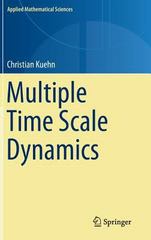Question
Q1) One-Sample t- Test (11 points total) I am shopping for a new sedan and would like to get one with excellent miles per gallon
Q1) One-Sample t-Test (11 points total)
I am shopping for a new sedan and would like to get one with excellent miles per gallon (MPG). I heard that Korean cars tend to be more fuel efficient than American cars, so I collected MPG data on a random sample of 15 Korean 4-cylinder sedan models (listed in the table below) to be compared to the American car statistics. I would like to see if there is a significant difference, in either direction, between Korean sedans and American sedans. The US Environmental Protection Agency reported that the average MPG for American sedans in 2017 is= 30.6. I set the significance level at = .10 for a two-tailed hypothesis test.
Hint: Because we know the population mean for the American cars but not the standard deviation, we cannot conduct a Z test but should perform a one-sample t-test instead.
| Korean car model | MPG |
| 1 | 30 |
| 2 | 29 |
| 3 | 29 |
| 4 | 36 |
| 5 | 33 |
| 6 | 32 |
| 7 | 30 |
| 8 | 35 |
| 9 | 35 |
| 10 | 33 |
| 11 | 24 |
| 12 | 36 |
| 13 | 30 |
| 14 | 29 |
| 15 | 31 |
Q1a. Information about the hypothesis test:
- What is the dependent variable in this hypothesis test? (.5 point)
The dependent variable is mile per gallon
- What is the "sample" for this one-sample ttest? (.5 point)
The sample is 15
- What is the target population represented by the sample? (.5 point)
The target population is 30.6
- What is the comparison population? (.5 point)
The comparison population is 30.6
Q1b. What would be the null and alternative hypotheses in both words and symbol notations for my analysis? (1 point total: .5 for null and .5 for alternative. Both the written format and symbol notation must be correct to get the .5 for a hypothesis)
| Written | Symbolic Symbol bank for copy & pasting: =<>m | |
| Null | H0: | |
| Alternative | H1: |
Q1c. Calculate the sample mean. Round the result to the hundredth (2nd place to the right of the decimal).(1 point: .5 if process is correct but answer is wrong)
Q1d. Estimate the standard deviation of the population from which the sample was drawn. Round the result to the hundredth (2nd place to the right of the decimal).(1 point: .5 if process is correct but answer is wrong)
Q1e. Calculate the standard error (standard deviation of the sampling distribution) (1 point: .5 if process is correct but answer is wrong)
Q1f. Calculate the t statistic for the sample (1 point: .5 if process is correct but answer is wrong)
Q1g. Figure out the degree of freedom (.5 point), and then determine the critical tvalue(s) (.5 point)based on the type of test and the preset alpha level.
Q1h. Compare the t statistic with the critical t value. Is the calculated tstatistic more extreme or less extreme than the critical tvalue? Based on this comparison, do we "reject" or "fail to reject" the null hypothesis? (1 point total: .5 for each answer)
Q1i. Interpret the result in 1 sentence to answer the research question (you may use the wording of the hypothesis or explain it in your own words). (1 point)
Q1j. Calculate the standardized effect size of this hypothesis test. Round the result to the hundredth (2nd place to the right of the decimal).(1 point: .5 if process is correct but answer is wrong)
Step by Step Solution
There are 3 Steps involved in it
Step: 1

Get Instant Access to Expert-Tailored Solutions
See step-by-step solutions with expert insights and AI powered tools for academic success
Step: 2

Step: 3

Ace Your Homework with AI
Get the answers you need in no time with our AI-driven, step-by-step assistance
Get Started


